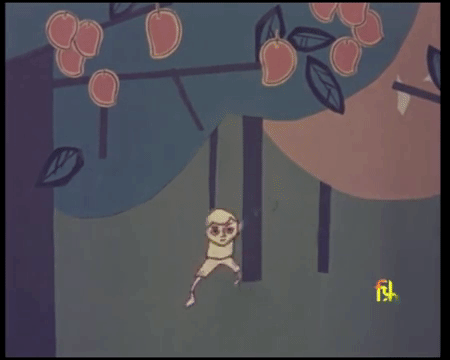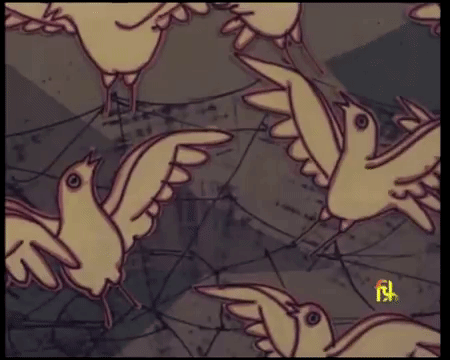Juvenile Justice Act 2015: What You Need to Know About The New Law
The newly amended Juvenile Justice (Care and Protection of Children) Act of 2015 came into force on 15th January, 2015. Experts have called it a tragedy and a travesty in the face of child rights and child protection. The decision to exact severe, retributive punishments from a child in conflict with the law is a worrying stance for the country to take. But the fact remains that. for now, the Juvenile Justice Act 2015 is here to stay.
It is not easy to summarily dismiss the shadow cast by the law on some of our most vulnerable children. But to work with these children and protect them, understanding the new amendments to the existing JJA is key. For that purpose, we have culled out 14 important amendments to the law that you need to know about. We have also listed key issues and grey areas in the Act that we need to keep an eye on.

1. The ‘Child’ is no longer a ‘Juvenile’
Despite what the Act and some of the institutions (the Juvenile Justice Board, The Special Juvenile Police Unit) that fall under it are called, the text of the act refers to the minor in question as a ‘child’ and never a ‘juvenile’. The preferred vocabulary is ‘children in conflict with the law’ and ‘children in need of care and protection’.
2. Three Kinds of Offences:
Offences committed by the child in conflict with the law have now been graded into 3 categories:
petty:crimes which carry a punishment of a maximum than 3 years under the IPC
serious:crimes which carry a punishment between 3 and maximum of 7 years under the IPC
heinous: crimes which carry a punishment of over 7 years under the IPC
3. Timeline for Inquiry of Cases:
The Juvenile Justice Board now has 4 months to conduct a preliminary assessment of the cases (as opposed to 1, previously). The period can be extended by an additional two months. At the end of this period, an inconclusive inquiry will lead to petty cases being dropped. However, the board may receive extensions for inquiry into serious and heinous offences.
4. Heinous Offences By a Child Who Has Completed 16:
The Board and maybe, the people it deems as experts will conduct the inquiry that will determine whether the child has the ‘physical and mental capacity’ to commit the crime. The assessment will then be put forth before the Children’s Court and they will decide whether or not the child in conflict with the law needs to be tried as an adult.
5. From Place of Safety to Prison:
It is the responsibility of the State Governments to set up at least one ‘Place of Safety’ in every State. If a child who has completed 16 years of age is found guilty of committing a heinous offence, they will first serve their sentence in a ‘place of safety’ (borstals) till the age of 21. Thereafter, there will be an assessment (by the probation officer, District Child Protection Unity, an NGO or the court itself) as to whether or not the child has been sufficiently reformed. If the results are positive, they can release the child. However, if said reformation has failed manifest itself, the child will be transferred and incarcerated in an adult jail for the remainder of his sentence.
6. No Death Penalty or Life Imprisonment:
No child in conflict with the law can be sentenced to death or life in prison. Also there will be no joint proceedings of a child in conflict with the law and an accussed who is not a child.
7. Anti-Militancy:
Militants, terrorist groups and gangs who use children for illegal activities will be liable for rigorous punishment and a fine.
8. Mandatory Registration of Child Care Institutions:
No childcare institution whether run by the state or by an ngo or any other institution can operate without registration. All childcare institutions need to get themselves registered under the Juvenile Justice Act 2015 by June 2016. (estimate) The registration will have to be renewed every 5 years. The penalty for non-registration is jail term upto 1 year or fine of upto 1 lakh rupees or both. An Inspection Committee at State and District level will inspect the institutions atleast once a year.
9. Ensuring Quick Action by Juvenile Justice Board:
If cases are piling up and kept pending, the Chief Judicial Magistrate and Chief Metropolitan Magistrate can direct the Juvenile Justice Board to increase frequency of their sittings. They can also constitute additional boards. A High Level State Committee consisting of Home Secretary, Secretary of WCD and a nominated NGO will also review the pendency of JJB cases.
10. Ensuring Accountability by the CWC:
CWC will submit quarterly review to the District magistrate on the status of the cases with them. The magistrate will review the performance of the committee. If the situation with regard to piling up of cases does not improve, the State can dissolve the existing committee and constitute another.
11. Social Audit:
The State will conduct timely and independent evaluation of the Functioning of JJBs, CWCs, Institutions, Fit facilities and persons.
12. Adoption Regulations and Mandatory Reporting:
A new separate chapter on Adoption has been introduced to streamline procedures for the adoption of orphan, abandoned and surrendered children. There is mandatory reporting of a child who is or is suspected to be abandoned, lost, orphaned or without family support.
13. Recognized Adoption Agencies:
The State Government will recognize one or more organizations in every district as a Specialized Adoption Agency. It will be inspected atleast once a year. Other institutions will be linked to the SAA.
14. Monitoring The Implementation:
The National Commission for Protection of Child Rights and the State Commission for Protection of Child Rights will be in charge of monitoring the Implementation of the Act.

Some of the Key Issues with the Text Are Easy to Forsee:-
- It revokes India’s Commitment to the United Nations Convention of the Rights of Child which holds the age of the child at 18.
- The infrastructure and personnel required for proper implementation from places of safety to a reliable cadre of counselors and other psychosocial experts is currently lacking.
- There are possible 46 kinds of offences that fall under the category of ‘heinous’. It’s not just for murder and rape that the child can be incarcerated in adult jail for but also in cases of drug trafficking and if her/his family is accused in a dowry case.
- There is no way to scientifically guarantee and validate the methods used to ascertain the ‘physical and mental capacity of the child to commit the offence.’
- Rather than focusing on rehabilitation, restoration and reformation, the Act takes a retributive stand against children.
- The Bill does not specify minimum age of criminal responsibility.
It will be challenging to watch the Act unfold on the ground. And confusing as well. It needs to be watched and studied in close quarters. As of now, it does feel like we have embarked on an uncertain future. As always, we must hope for the best.
Click Here to Read the Complete Text of the Juvenile Justice Act 2015

Recommended Reading:-
‘Replicating a Failed Western Model‘: An Interview With Swagata Raha
‘Juvenile Justice Act‘ page by PRS India







